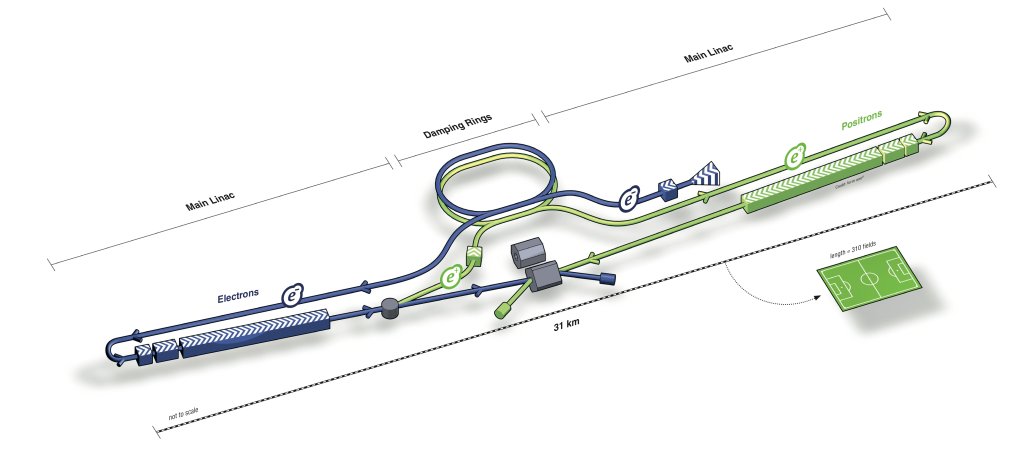

The Large Hadron Collider (LHC), with its enormous circumference of 27 kilometers (17 miles), has been making waves in the realm of particle physics. Most notably, the LHC has provided conclusive evidence for the existence of the Higgs boson, a discovery that was made and confirmed last year. The LHC has expanded and redefined our understanding of cosmology and quantum mechanics alike, but its era of making mind-boggling discoveries is coming to a close.
The next phase in particle acceleration will take place in Japan with the International Linear Collider (ILC), a particle accelerator so powerful it could reveal new forms of matter, probe extra dimensions of space, and even reveal why some mathematical equations work the way they do (earning it the nickname “Einstein’s telescope”). The ILC builds on the successes and learns from the short comings of the LHC. It will operate at 500 GeV (or 500 billion electron volts) with the possibility of an upgrade to 1000 GeV, and span a distance of 32 kilometers (20 miles). The new collider will be equipped with the ability to more precisely probe the attributes of the Higgs boson, explore possible dimensions that exist at the TeV-scale, and investigate supersymmetry while peering into the (possible) nature of dark matter.
Japan, expressing an ambitious interest in science, has agreed to foot the bill for half of the 8.67-billion USD project. Construction is expected to begin in 2015 or 2016 and the collider will not be finished before 2026.
So, to amend my earlier statement, construction on the future has nearly begun!